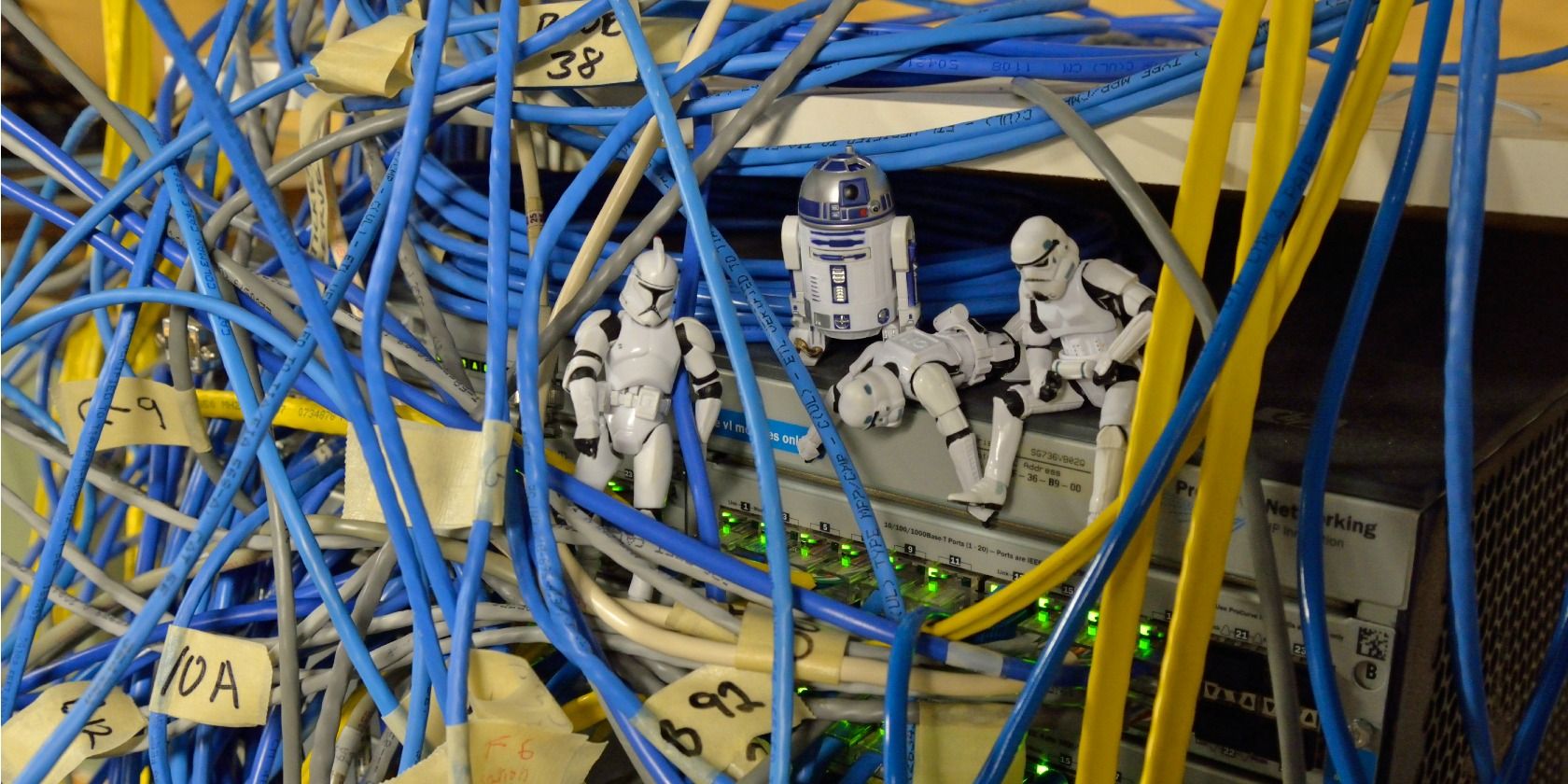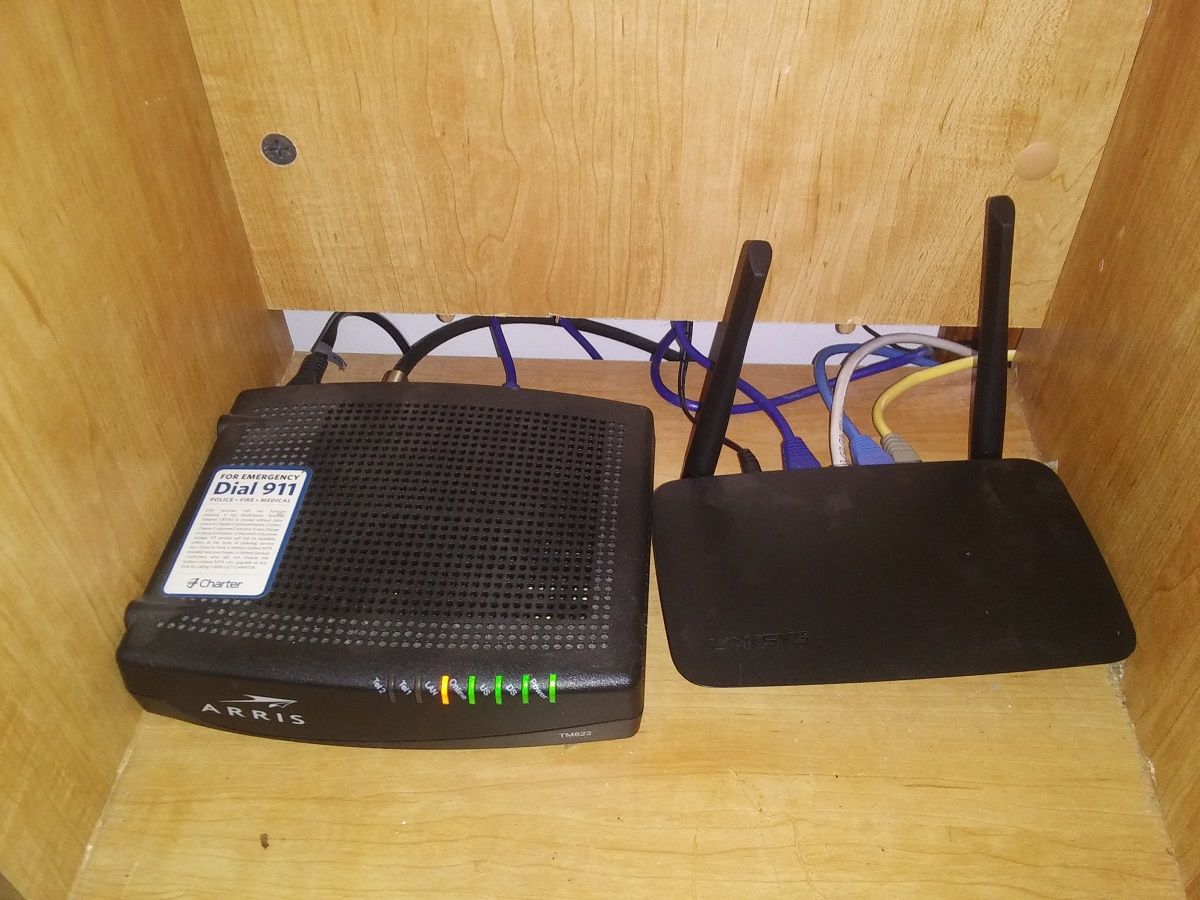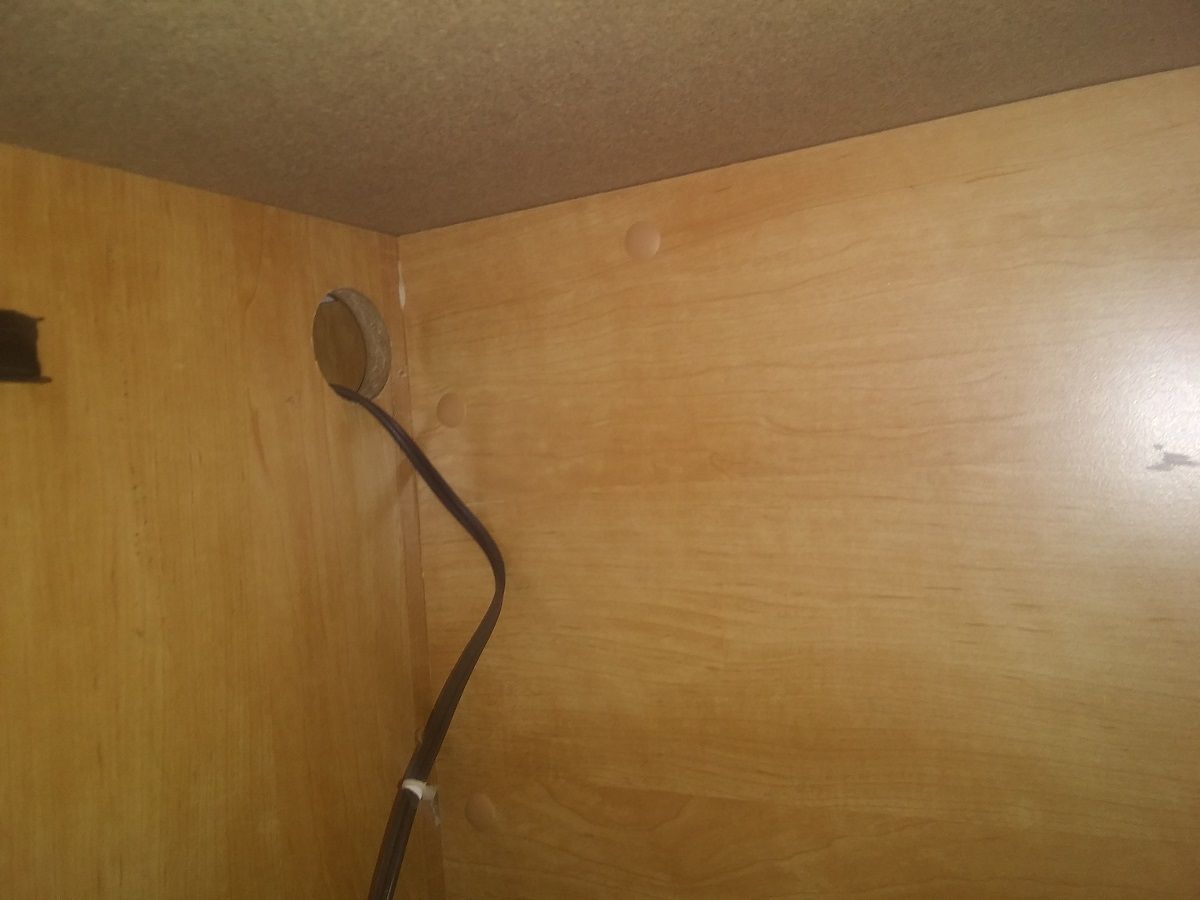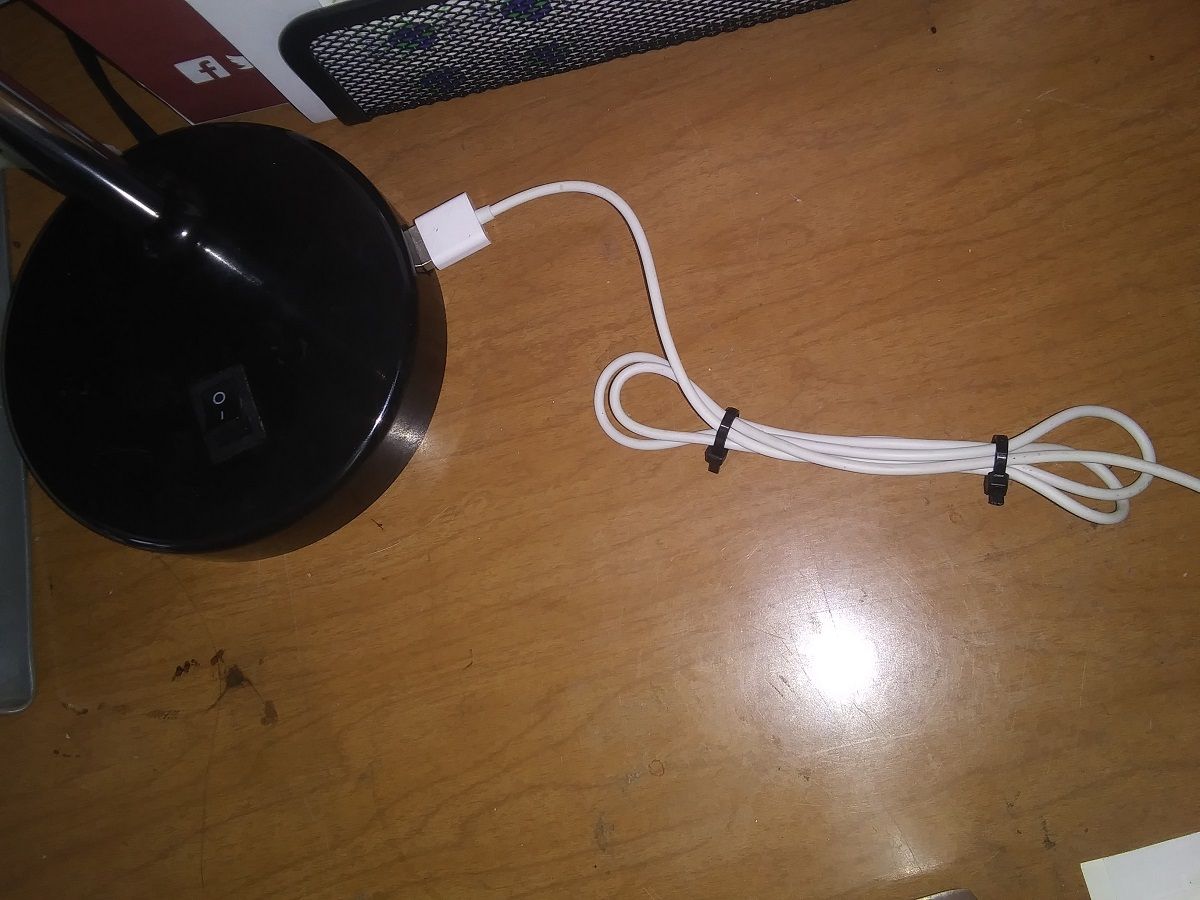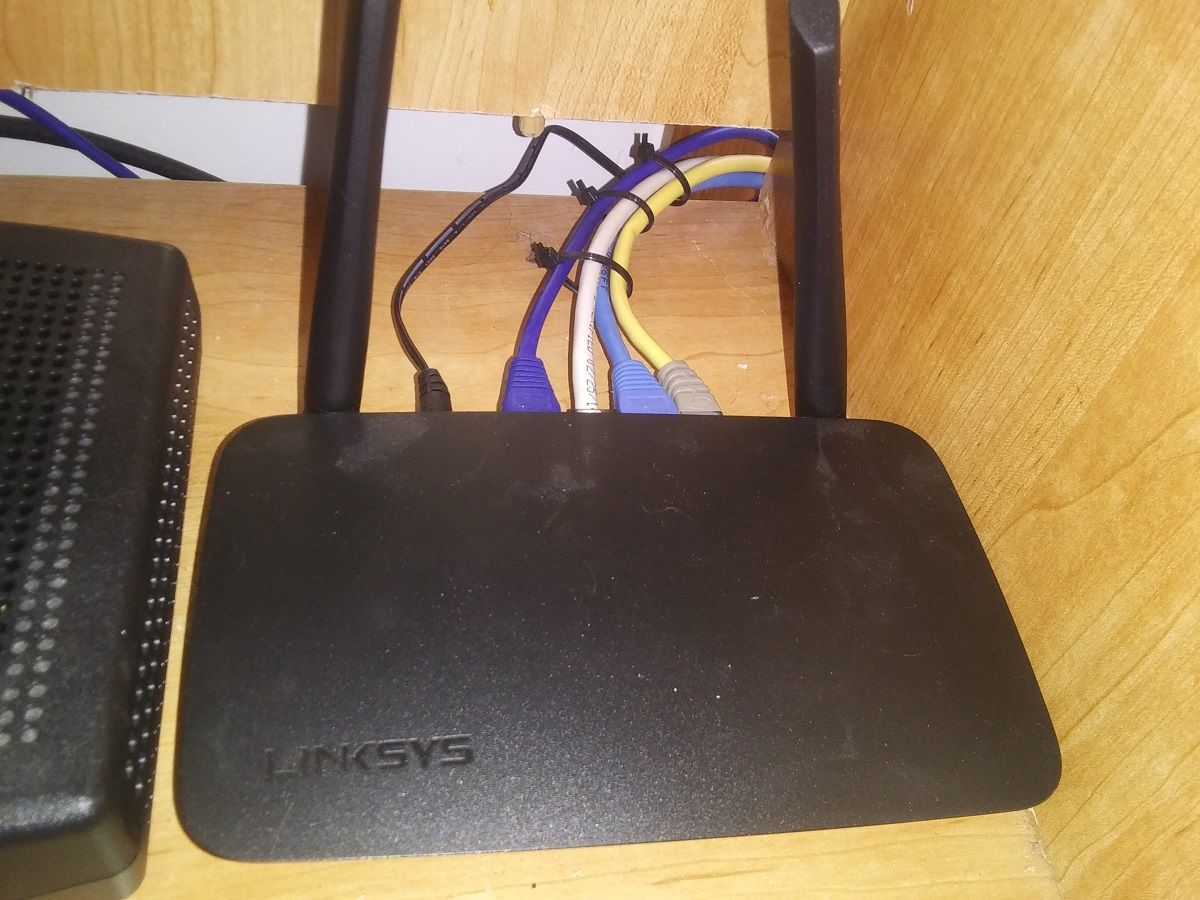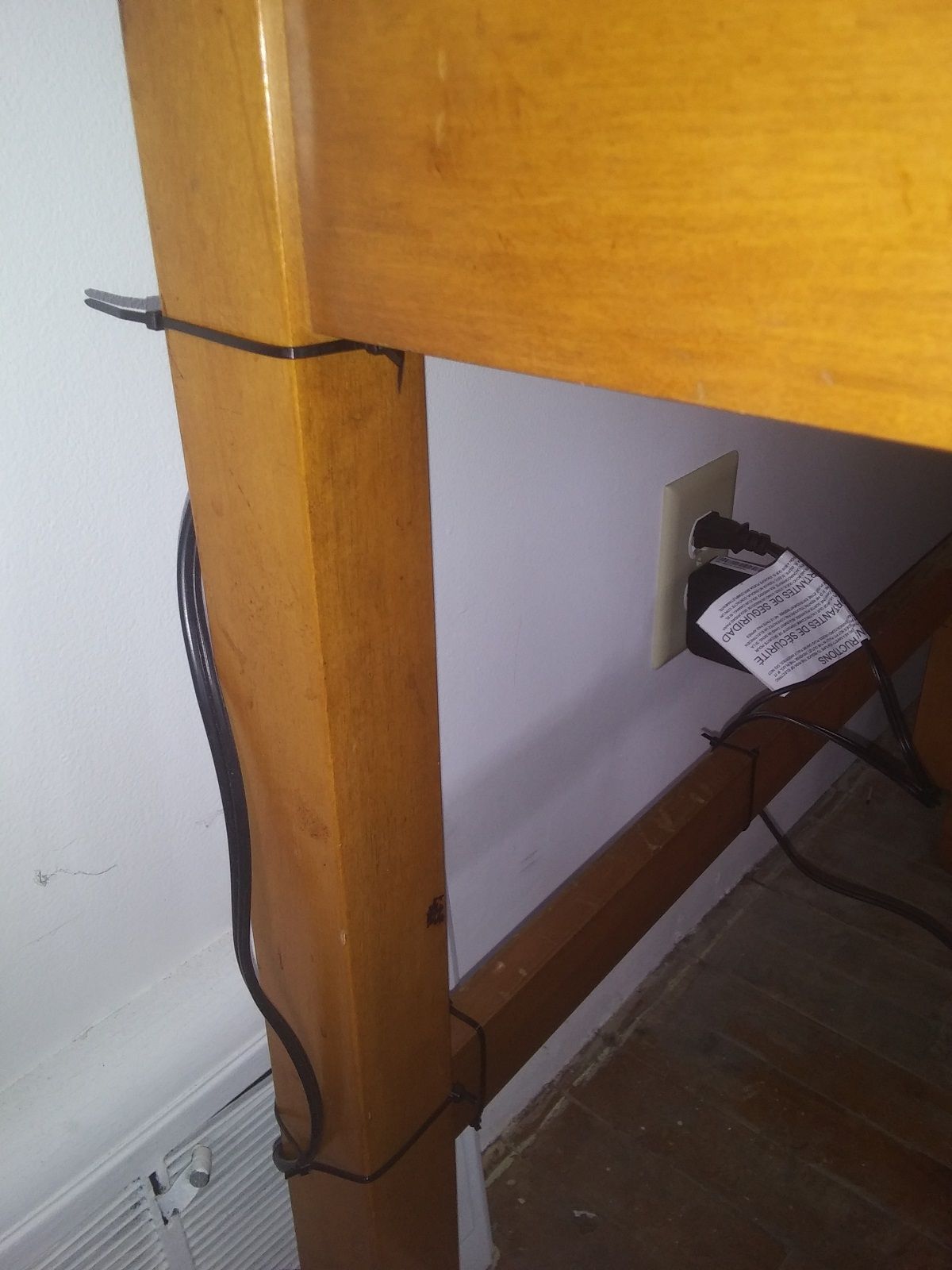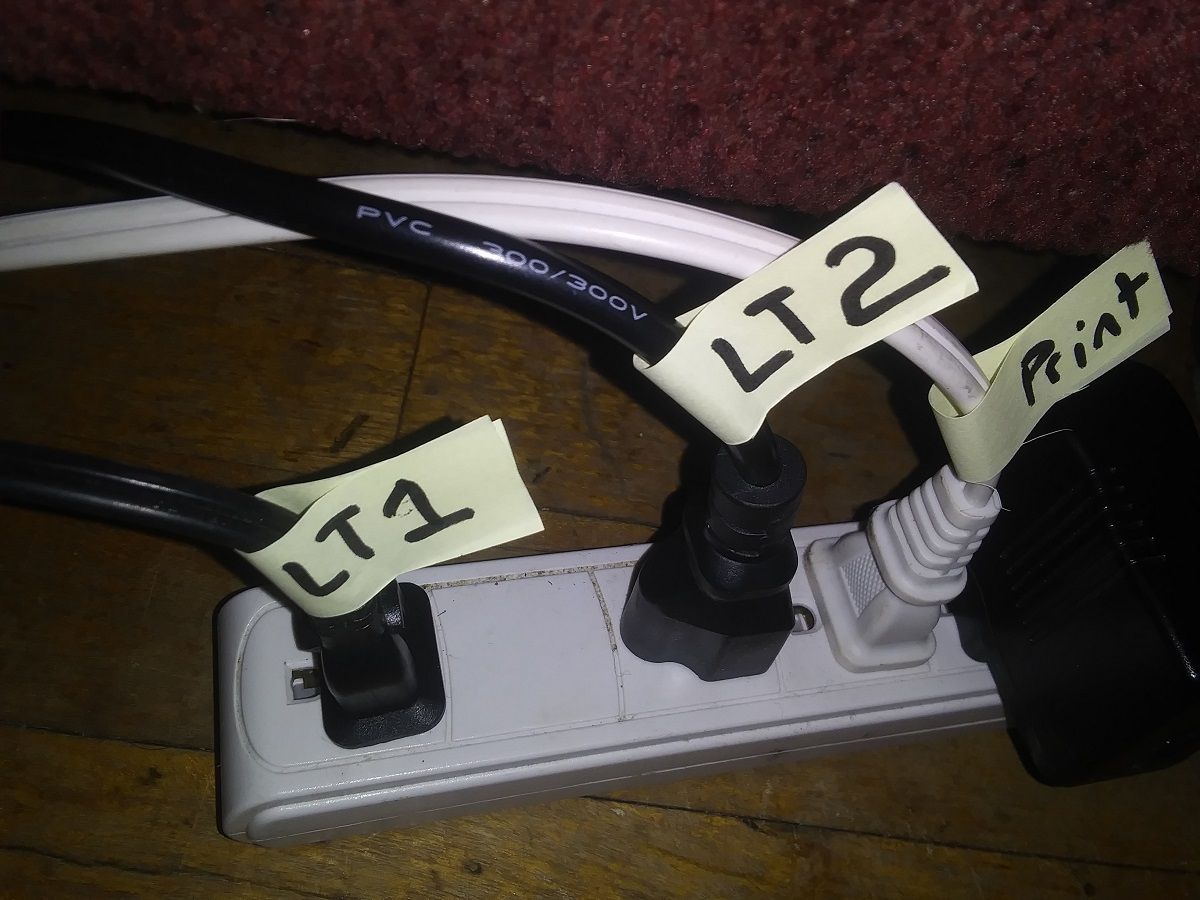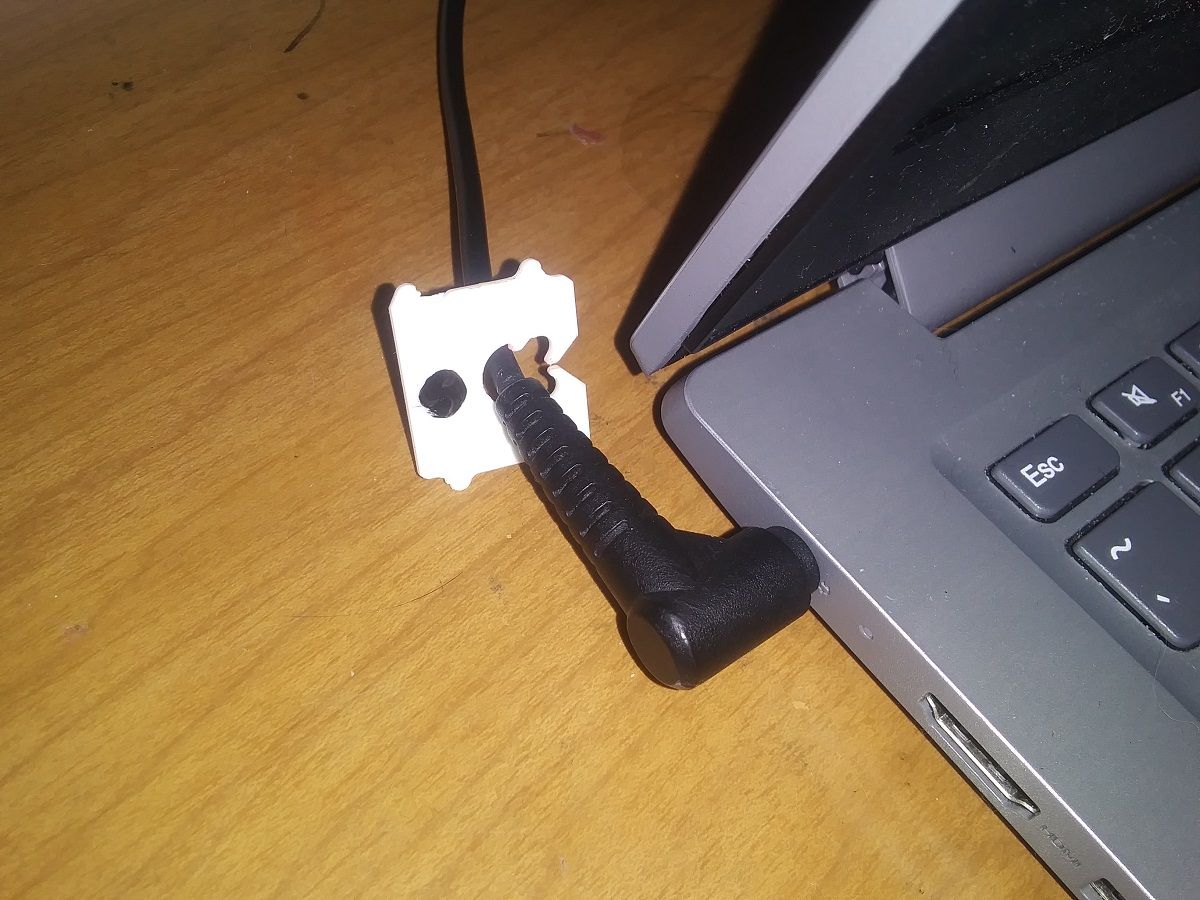For most people, the desk is cluttered with more than just a lamp and a typewriter. Lights, computers, monitors, phones and phone chargers, printers, the list goes on and all of those items have cables.
Keeping the cables under your desk tidy might seem like a thankless task. However, these cables are only out of sight and out of mind until you must unplug something or you have a technical problem.
Here are some handy tips to keep those cables neat.
How to Cable Manage Under Desks
The best way for you to improve desk cord management varies by the kind of desk you have, how it fits into your office space, and the kind of hardware that you deal with in your work or play. Some of the following suggestions apply to some people more than others.
Specifically, we'll be looking at these seven tips:
- Look for cable ports built into your desk
- Rethink how you use interior desk space
- Invest in multitasking docks and appliances
- Use zip-ties to bundle and route cables
- Invest in wire trays, cable sashes and cord sleeves
- Make simple labels for power cords
- Easy color-coding for cords and cables.
1. Look for Cable Ports Built Into Your Desk
Newer desks have all kinds of handy features for cable management. However, computers have been around long enough that even pretty old desks have these. Just look for them and arrange your hardware accordingly.
Some desks with on-top-of-desk organization features include cabinets with partial backs. This leaves space for cables to run from the top of the desk through the back of to the outlets and connections below.
While it is a fad these days to have a computer hard drive on top of the desk, it used to be standard to keep hard drives in cabinets under the desk. These cabinets in older desks often include ports drilled specifically for cables.
No matter where you keep your tower (if you have one) finding ways to use these cable ports can really help with your desk cable management.
2. Rethink How You Use Interior Desk Space
We're not suggesting that you take a Dremel to your desk. However, a little creativity with simpler tools and modifications to your desk makes all the difference.
If your office desk really is just a computer desk at this point, you probably have a lot of unused drawer space. Filing a notch out of the back of one of these drawers creates a cable port. Using these cable ports doesn't just let you store things in your desk while they charge, it also helps to gather and direct cables behind and under your desk.
Most flatpack desks have shelves that sit on top of pegs within cabinets. Sliding these shelves forward slightly creates a space behind the shelves allowing easier cable management.
3. Invest in Multitasking Docks and Appliances
We love DIY fixes, but one or two inexpensive purchases can drastically reduce the number of wires that end up running under and behind your desk.
Chances are, a number of those wires are just charging cables. Docks and desk caddies that can charge more than one item at once are an additional purchase, but reduce the number of wires going into the wall.
The same goes for small appliances that have USB ports. One of my favorite finds is a desk lamp with a USB port in the base. Pair one of these appliances with a short USB cable or zip-ties around a longer cable and you can keep cables tidily on top of your desk instead of letting them get tangled up underneath.
4. Use Zip-Ties to Bundle and Route Cables
Zip-ties are handy for gathering up long cables, but they are also useful for collecting cables coming out of one device or going in one direction.
All of the zip-ties in the photos in this article are four inches but they are available in larger and smaller sizes. The four inch models are short enough to be useful but long enough to be versatile.
If you use smaller zip-ties, connect a few together to get the length that you need.
In photo above, zip-ties bundle wires together to keep them separate from wires related to the modem next to it. The zip-ties also direct the wires going to the right away from the power cable going off to the left. This keeps them all from getting tangled under the desk.
Use zip-ties to attach individual wires to other structures for better organization. In this photo, the power cable from the USB lamp above is channeled along the back of the desk so that it doesn't get tangled with the laptop charger where they both go into the outlet.
Zip-ties can be cut but don't use them this way for cables that you regularly unplug and move. For example, the laptop charge cable in the photo isn't secured this way because the laptop doesn't stay permanently on the desk like the lamp does.
5. Invest in Wire Trays, Cable Sashes, and Cord Sleeves
If zip-ties are a little too rustic for you, there are some more professional solutions that you can buy.
- Wire trays: these secure to the underside of a desk to hold cables together.
- Cable Channels: secured to desks or walls these tidily route cables.
- Cable sashes and cord sleeves: keep cables bundled together.
All of these can be ordered individually or in kits online. While zip-ties might be more effective, these solutions look better.
6. Make Simple Labels for Power Cords
For those electronics that aren't a fixture on your desk, associating the plug with its device is often a bother. Instead of tugging on the input to identify which plug you must take out, there are some underdesk wire management tricks that do wonders.
Making labels for plugs is a simple solution. Cut the adhesive portion off a sticky note and wrap it around the base of the cord. Then, write the name of the appliance on the tag. If it's on a plug that you move around a lot, reinforce the tag with clear tape for durability.
7. Easy Color-coding for Cords and Cables
A quicker and more colorful option for organizational tags uses the clips that secure store-bought bread bags. Put one near where the cord plugs into the device and one near where the cord plugs into the wall. Use differently colored tags for each device so you know what plug connects with what device when you look at the cords under your desk.
If all of your bread tags are the same color, color-code them with differently colored stickers or markers.
How Tidy Are Your Cables?
Whether you like to move things around a lot, or you don't mess around under your desk very often, organizing your cables has huge advantages.
Reducing the number of cables, gathering up excess cables, and finding creative ways to route and label your cables can all be easy, quick, and affordable approaches to improving your under desk cable management.
If cables are a mess on top of your desk too, follow the link below to learn organizational techniques for the topside of your workspace.

